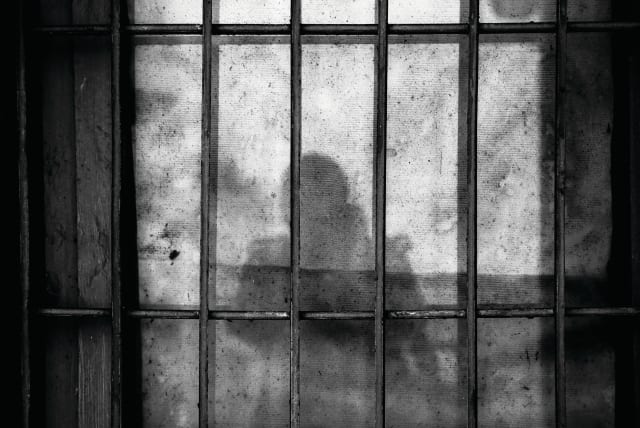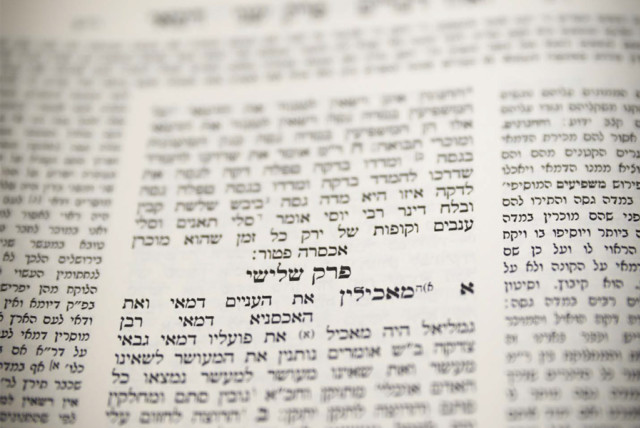We must fight for hostages but know we cannot imagine what they're going through - opinion

The tale speaks to the value of personal experience, suggesting that reading, hearing, or knowing about an event cannot replace the unmediated moment of personal experience.
Rabbi Menachem Nachum of Chernobyl (1730-1797) was one of the founding hassidic masters, spawning dynasties that continue to this day, including Tolne, Skver, Rachmastrivka, Trisk, Hornosteipel, and, of course, Chernobyl. Rabbi Menachem Nachum is best remembered for his posthumously published collection of hassidic teachings: Me’or ‘Einayim (Sławuta 1798). This work is often printed together with his insights on the Haggadic passages of the Talmud, titled Yesamah Lev (Sławuta 1798).
The rabbi was once accused of being involved in the death of a Jew who had converted to Christianity, and he was promptly imprisoned. While in jail, the hassidic master tried to use his time for Torah study as best he could.
One day, a woman came to the prison window and peered in. The rabbi thought that she was asking for a donation, so he took a coin from his pocket, gave it to the woman, and then returned to his studies. But the woman did not move on. When he next looked up, he saw that she was still standing there. Assuming that she was asking for more assistance, he took another coin and gave it to her before returning to his learning.
The woman still remained at the window, so the rabbi thought that she was expecting a significant donation. “My dear woman,” said the hassidic master, “you want a significant donation, but I am in prison and I simply cannot give you what you want.”
The storyteller recorded the woman’s response, but he could not remember if she said “I don’t want a donation” or “I don’t need a donation.” Either way, the woman continued: “All I know is what is written,” and then she recalled a tale from the Talmud (Babylonian Talmud, Bava Kama 50a).
What the rabbis say
According to the Talmud, Rabbi Nehunya ben Hakana would dig water cisterns for general use, and the sages lauded him for this unselfish act of public service. This Talmudic passage continues with the tale of the daughter of Rabbi Nehunya ben Hakana – although here the protagonist is called “Nehunya the cistern digger.” Nehunya’s daughter once fell into a large cistern and could not be located. The people went to notify Rabbi Hanina ben Dosa, who was famous for his prayer capabilities, so that he would pray for the girl’s safety.
After one hour, Rabbi Hanina ben Dosa affirmed: “Shalom,” indicating that the girl was still safe. An hour later, Rabbi Hanina ben Dosa once again confirmed the girl’s safety: “Shalom.” After three hours, Rabbi Hanina ben Dosa declared: “Certainly she has come out already.” As thus it was.
The people turned to the girl and asked her who had helped her out of the pit. She responded: “A ram appeared, with an old man leading the ram, and it was by his hand that I was saved.” As commentators explain, the ram was the animal from the Binding of Isaac, and the old man was Abraham (Genesis 24:1).
The people then returned to Rabbi Hanina ben Dosa and asked incredulously, “How did you know she would get out? Are you a prophet?” Rabbi Hanina ben Dosa explained, beginning with the biblical words “I am not a prophet, I am not even the son of a prophet” (Amos 7:14); “rather, in my heart I reasoned as follows: Could something that this righteous person” – referring to Nehunya the cistern digger – “toiled over be the source of the downfall of his children?”
The woman at the jail window recalled Rabbi Hanina ben Dosa’s declaration – “Could something that this righteous person toiled over be the source of the downfall of his children?” And she added, “So I put it to you: You regularly toil at the mitzvah of securing the release of captives, yet now you are imprisoned?”
Rabbi Menachem Nachum responded with humility: “It is possible that Nehunya was truly toiling without any ulterior motive, while it is possible that I am not at such [a lofty level].”
The woman, however, had a different explanation: “I will give you the explanation: Because you regularly toil to secure the release of captives, therefore the Almighty caused it so that you would sense how great this mitzvah is when you secure the release of captives.” It seems that Rabbi Menachem Nachum’s own bitter experience as a captive would incentivize him to redouble his efforts on behalf of those whose freedom was being denied.
The storyteller concluded the tale with Rabbi Menachem Nachum’s rejoinder, although he admitted that once again he was unsure of the exact wording. Did the hassidic master say “Then I had a glance [at the woman]” or did he say, “So I took a look.” Either way, the rabbi realized that “Lo and behold, the woman was our mother Sarah!”
Taking a step back from the story, we hear the humility of Rabbi Menachem Nachum of Chernobyl, as he doubts whether all his dedication to securing the release of those held captive has been done altruistically. His plight as a captive himself seems to indicate to him that his efforts have been lacking in some way. Perhaps that is the reason he seems to accept his fate in prison and dedicates his time in incarceration to Torah study.
Yet, Sarah, the matriarch of the Jewish people, comes to tell the hassidic master that he is reading the situation incorrectly. His imprisonment is a form of encouragement so that he can appreciate what captives experience and understand what a great mitzvah he does when he secures their release.
The tale speaks to the value of personal experience, suggesting that reading, hearing, or knowing about an event cannot replace the unmediated moment of personal experience.
In our current reality – as our brothers and sisters languish in captivity – it is a stark and painful reminder that no matter how much we think, talk, pray, advocate, and protest on behalf of the hostages, we cannot truly understate their pain and suffering. There is really no substitute for the actual experience of incarceration.
Perhaps the Talmudic tale and the hassidic story might also offer a comforting image. Let us hope that our brothers and sisters who are held in captivity are visited by our illustrious ancestors, Abraham and Sarah. Perhaps in the merit of our saintly forbears, the captives will be lifted from the depths of deep underground pits.
The writer is a senior faculty member at the Pardes Institute of Jewish Studies and is a rabbi in Tzur Hadassah.
Jerusalem Post Store
`; document.getElementById("linkPremium").innerHTML = cont; var divWithLink = document.getElementById("premium-link"); if (divWithLink !== null && divWithLink !== 'undefined') { divWithLink.style.border = "solid 1px #cb0f3e"; divWithLink.style.textAlign = "center"; divWithLink.style.marginBottom = "15px"; divWithLink.style.marginTop = "15px"; divWithLink.style.width = "100%"; divWithLink.style.backgroundColor = "#122952"; divWithLink.style.color = "#ffffff"; divWithLink.style.lineHeight = "1.5"; } } (function (v, i) { });

